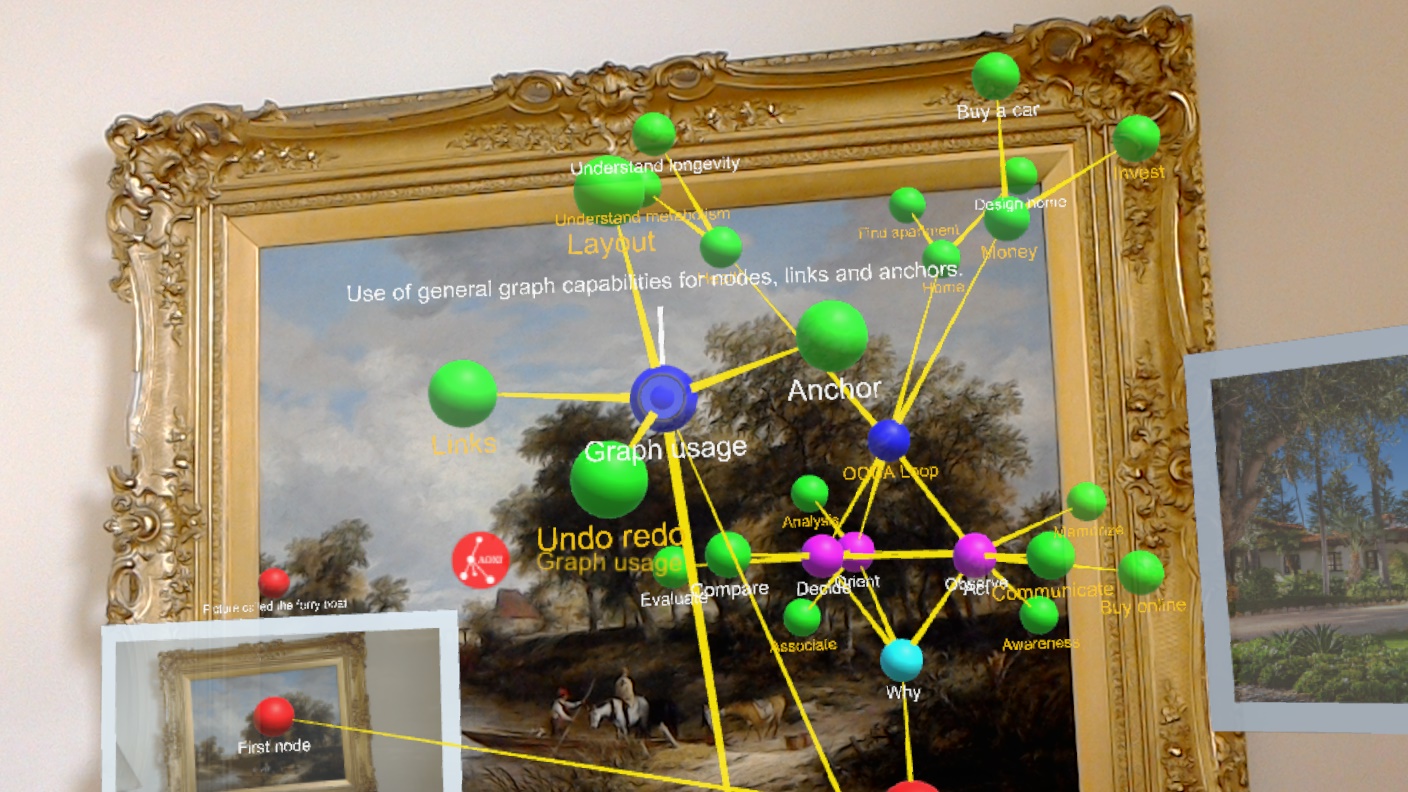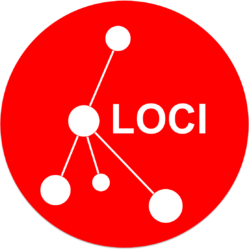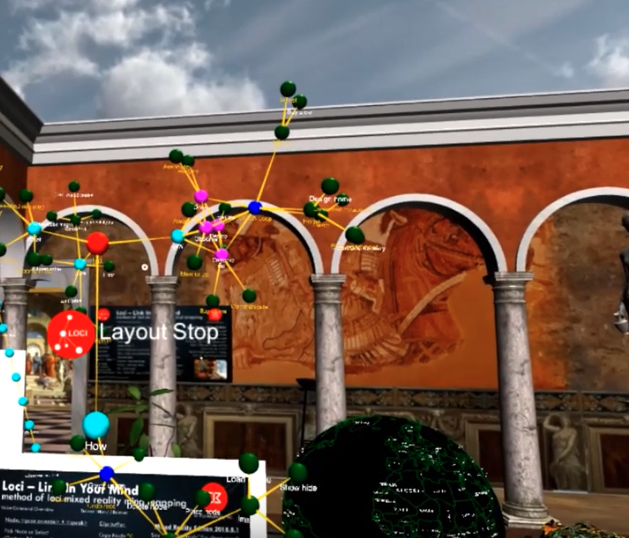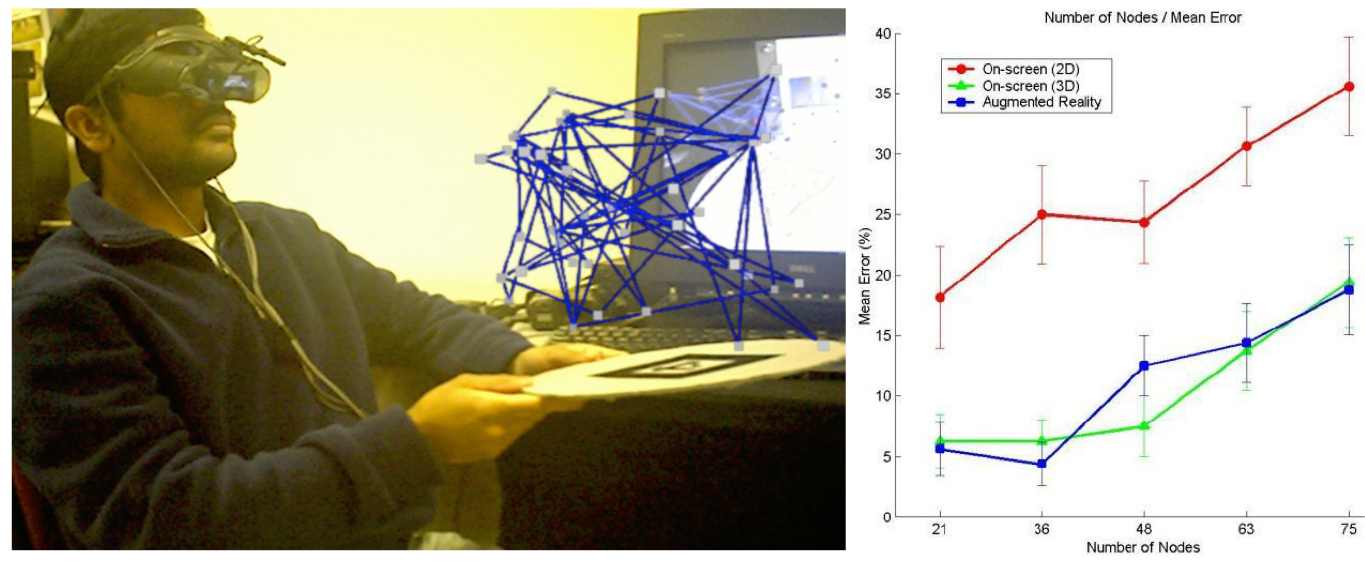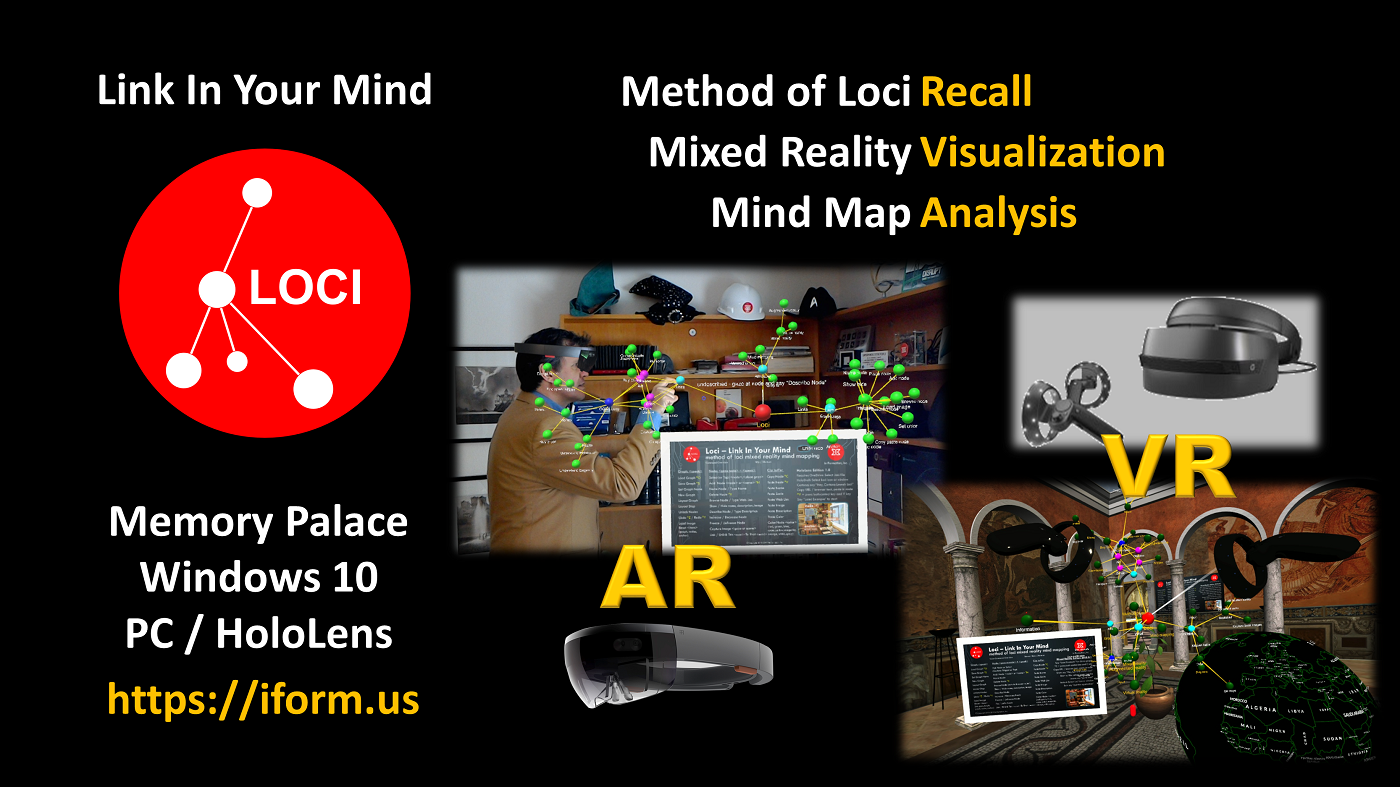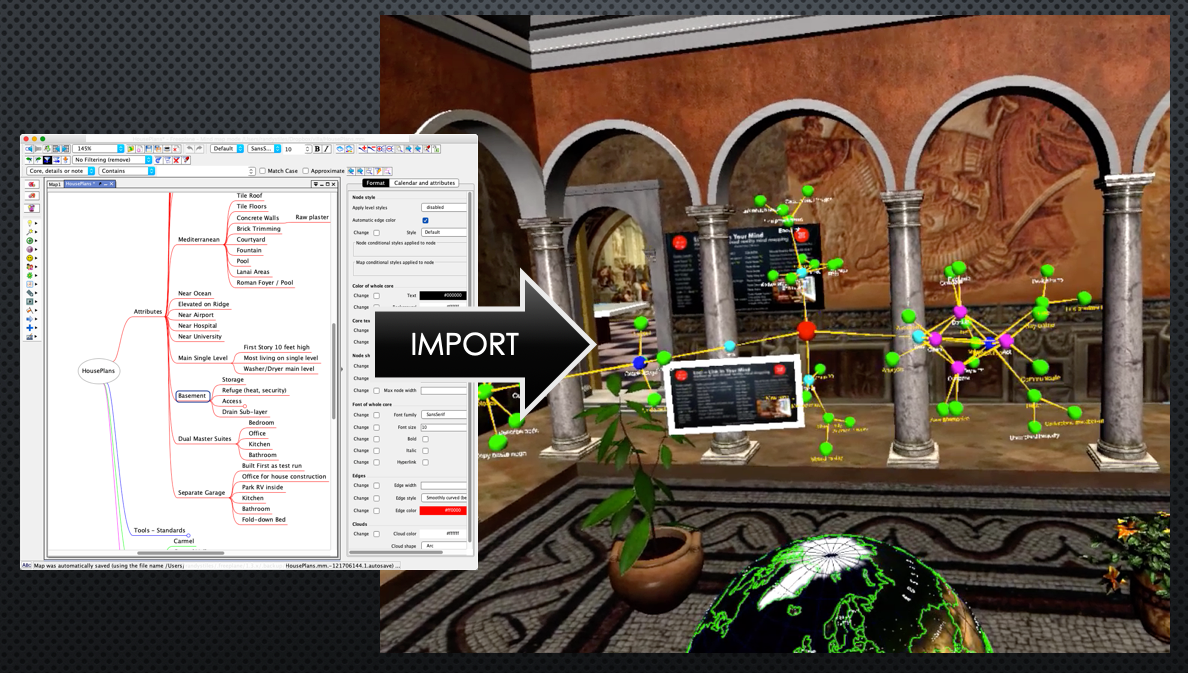This Loci Memory Palace VR how-to video will demonstrate how to unlock the nodes of a mind map graph and preform a forced layout of the graph. The voice command “unlock nodes” is used. You can also focus the pointer on a node and say “unpin node” to do an individual node.
HowTo: Import Freeplane Mind Maps
HowTo: See the Real World with Flashlight
HowTo: Move Graph with Anchor
HowTo: Layout a graph
HowTo: Use Undo Command
HowTo: Load a Graph
AR 3D Graphs Improve Comprehension over 2D
Most mind maps are shown as 2D views of a graph with central nodes. It is generally better for comprehension to see and interact with a 3D version of the same graph to understand the relations between its nodes.
In the paper Using augmented reality for visualizing complex graphs in three dimensions by D. Belcher, M. Billinghurst, S Hayes, and R. Stiles, published in the International Society for Mixed and Augmented Reality (ISMAR) 2003, the study results (link) showed that there is a significant advantage with reduced error for 3D views over 2D views of the same graph when trying to determine if nodes are connected (linked) to each other, which is a key capability when trying to comprehend a graph (or mind map).
The study shows that this improvement of 3D views and interaction with complex graphs also transfers to augmented reality, and not just desktop 3D. In the graph from the paper, you can see significantly reduced node link comprehension error for 3D desktop and AR over the conventional 2D case, and this relationship holds as the number of nodes in the scene scales up.
Loci for AR and VR
Link In YOUR Mind – You Organize, Understand and Recall
Loci currently is provided as two variants; Loci Memory Palace in Virtual Reality on the PC and Loci AR Mind Map in Augmented Reality on the HoloLens. Both have a free seven day trial period and can import mind maps.
Loci uses three core concepts to help you organize, understand and recall; mind maps lets you break a problem down into component parts to organize and do analysis, mixed reality interaction with mind maps lets you visualize in 3D to understand how they are related, and the method of loci persistent placement of mind map nodes lets you improve your recall of the mind map, even when you are not using the Loci software. In this way you can organize your problem, understand it, and remember it later when you need to use that information for decisions.
Loci Memory Palace puts you in a 3D Memory Palace where you can make mind maps using the Windows Mixed Reality headset, and handheld controllers. You can use hand controllers to move, scale or rotate nodes or designate them for voice commands, or to select a place for moving nodes.
Loci AR Mind Map helps you put nodes and links in your own real settings using the HoloLens, such as your home, where you can place your notes and ideas with real items to help you remember and think about them. You can use one or two hand gestures with your own hands to move, scale or rotate nodes.
Both versions of Loci support gaze and voice interaction combined, so that the use of hands or controllers is not required at all times.
Both versions of Loci share the same mind map graph format, *.loci, and both have initial import capability for MindManager, Freemind, and GraphML files. This allows you to bring in your previous mind maps and graphs, as well as mind maps or graph data from other people.
Import to Loci
Loci currently imports three file types; MindManager, Freemind / Freeplane, and GraphML. Here we provide an overview of the formats, our import of the format, and usage in Loci.
Loci has its own file format based on JSON, which has the file extension *.loci. It supports concepts of graph, node and edges for general graphs. Our initial import capability imports nodes, implicit MindMap relations (links), explicit relations, colors, urls, notes, and titles, and 2D positions where possible.
The Loci voice command to import is to say “Load Graph” which will use the system file browser to find files with extensions Loci can import. Once imported, you may wish to use “Graph Reset” followed by “Graph Layout” to use our force directed layout in 3D.
The MindManager format has the extension *.mmap and is actually zipped (compressed) xml based text. It is generally a strict mind map format and not a full graph format, in that it expects one or more central nodes. MindManager is a capable 2D mind mapping tool for Windows, Mac, iOS, and Android that has scheduling capabilities, and different 2D views.
The Freemind and associated Freeplane format has the extension *.mm and is an unzipped xml format file. Like MindManager, it expects central nodes, with implicit links (edges) to nodes nested within it. Freemind and Freeplane are java based open source 2D mind mapping tools available for Windows, Mac and Linux, and are widely used as an intermediate mind map format for exchange between systems. We tested our import using Freeplane, which is a fork and likely superset of the Freemind app and format.
The GraphML format has the extension *.graphml and is xml based. It primarily uses the abstraction of nodes and edges (links). It allows for a wide variety of graphs, a superset of mind maps. This includes freestanding nodes, graphs with cycles, and bi-directional graphs. And of course it allows for typed edges (links, relations) between nodes, while in Mind Map applications such relations are an exception. The variety of GraphML we have tested on has been produced by yEd, a free 2D java based graph editor available for Windows, Mac and Linux with nice automated layout capabilities.
